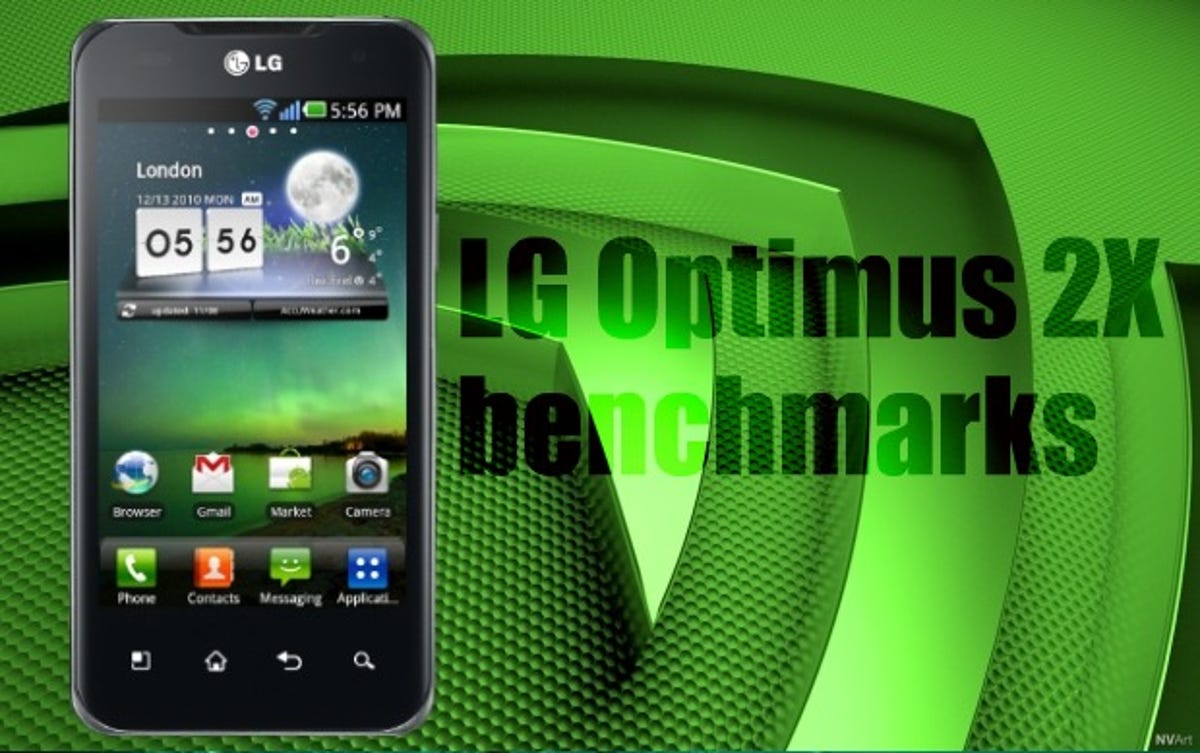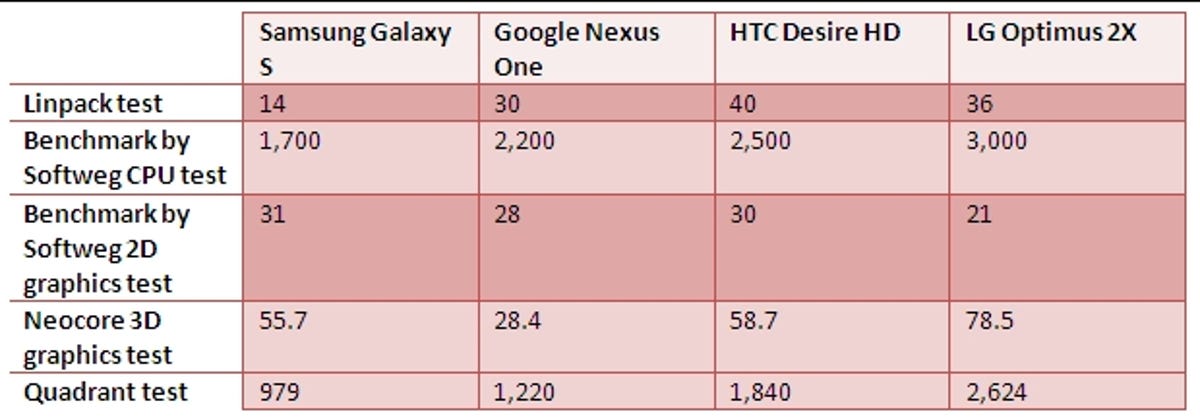
The LG Optimus 2X is the first of many dual-core phones fighting for our pocket space this year, amid claims that two brains are better than one. We’ve put the bi-lobed beauty through its paces in a series of benchmarks to see how the numbers stack up.
We used four benchmarking apps that are free from the Android Market — Linpack, Benchmark by Softweg, Neocore and Quadrant — so you can try them yourself to see how your own phone measures up.
Each of these tests benchmarks the phones differently. Linpack tests floating-point computing power. Benchmark by Softweg tests 2D graphics by drawing bitmaps, and CPU performance in operations per second. Neocore is a real-time test of 3D graphics in frames per second. Quadrant gives an all-in-one score that includes processor and graphics performance numbers.
We tested the Samsung Galaxy S and the Google Nexus One in our Hummingbird vs Snapdragon showdown — both running their Android 2.2 updates, and without the Galaxy S lag fix. For this battle, we’ve thrown in the HTC Desire HD, too.
Let’s take a look at the results in a handy table. In each case, the bigger the number, the better.


Gadzooks, that LG Optimus 2X is fast! It comes up trumps in the CPU tests despite all four phones claiming 1GHz clock speeds and similar RAM (all 512MB except the Desire HD, which has 768MB). So what’s the story?
The credit goes to the two cores, which can execute multiple instructions at once. That ability to keep lots of balls in the air should really come in handy when multi-tasking — listening to music while opening Google Maps, for example.
But there are a few grains of salt to take with these tests, because benchmarks tend to favour particular types of processor. Snapdragon chips, for example, have been tweaked to achieve more instructions per clock cycle, while Hummingbird chips focus on logic design that can do binary calculations with fewer instructions.
The Optimus 2X is the new kid on the block with an Nvidia Tegra 2, so it’s no surprise that phones that all ‘feel’ fast can perform differently in tests.
Another contributor is the GPU, a processor dedicated to graphics that takes the heat off the main CPU. Despite having a GeForce GPU on board, the Optimus 2X struggles to keep up in our 2D graphics test, although it rocketed to the front of our 3D race.
Nvidia tells us games that are optimised for the Tegra 2 will help take advantage of the phone’s GPU. They’ll include Galaxy on Fire 2 and Fruit Ninja THD.
In our full review of the Optimus 2X, we thought the phone felt fast as lightning doing real-world tasks such as zooming through its screens and opening apps, although it had some irritating software glitches. That goes to show that speed isn’t everything, but we’re convinced by the dual-core speeds — both in benchmarks, and in person.
Update: The Optimus 2X dominated in the Neocore 3D graphics test, but we incorrectly noted its performance in our table. The Nvidia Tegra 2 scored 78.5 frames per second, beating the second-place Desire HD’s 58.7fps by miles.



